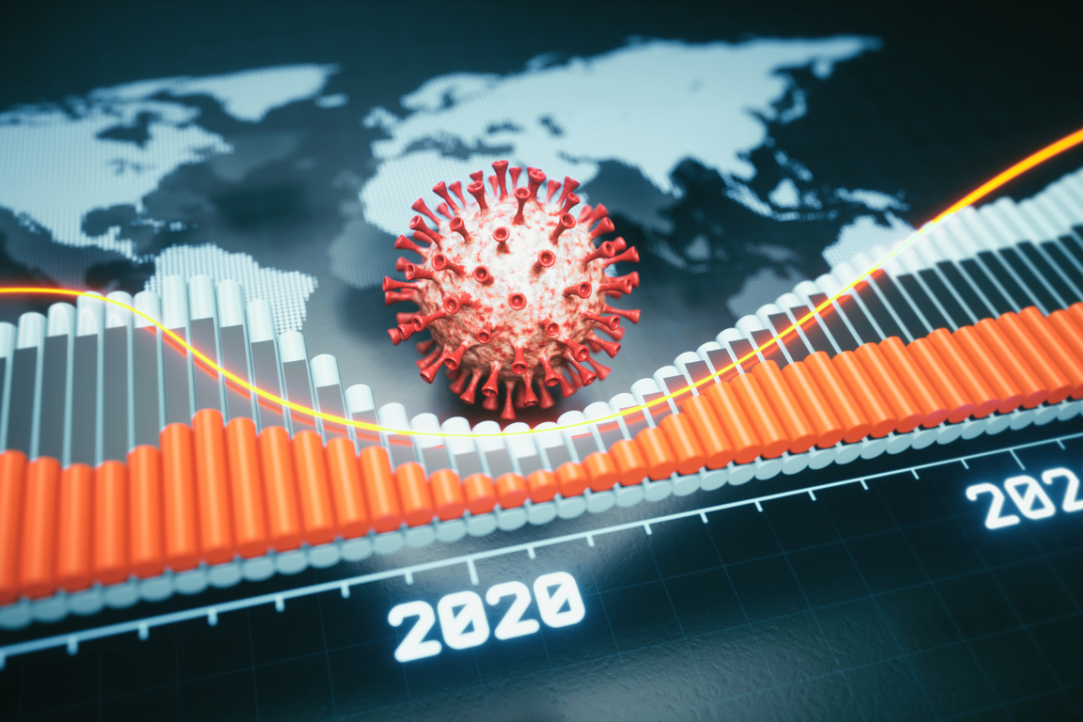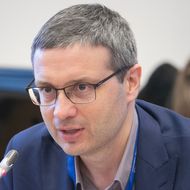Post-pandemic Rehabilitation. What Will Help Russia's Economy Recover?

The year 2020 was a period of economic hardship and significant change in a wide range of sectors for most countries. A team of authors from HSE University has explored how Russia will recover from this crisis and which industries will be affected by the economic recovery. Their study was published in the journal Voprosy ekonomiki.
Last year, the global economy experienced a crisis due to the coronavirus pandemic, with output falling by 3.5% compared to 2019. Russia’s decline from the coronavirus measures was more moderate than in many developed countries (industrial production fell by 3.1% in 2020) and much less severe than in past crises (7.8% in 2009 and 5.3% in 1998). Recovery following those crises took different trajectories — in the early 2000s the Russian economy showed very high growth rates, while the 2008-2009 crisis was followed by stagnation. Experts are now attempting to predict which scenario the recovery will mimic in the coming years and how sustainable growth will be.
The authors of the paper analysed the sources that shaped economic growth in Russia from 1995 to 2016. To do so, they compared the contribution of various production factors to economic growth in different industries, labour productivity and resource efficiency. Separately, the authors sought to distinguish between intensive growth (due to lower specific labour and capital costs) and extensive growth (due to the new resources).
Economists have used the term Total Factor Productivity (TFP), which characterizes the efficiency of production and use of resources (other than capital and labour) and determines the growth generated by lower factor inputs per unit of output. For example, in 2002-2007, almost all productivity growth was achieved through an increase in TFP (5.5 p.p. out of 6 per cent), while in 2011-2016 productivity rose (through capital inputs) but TFP declined, indicating less sustainable economic growth after the 2008-2009 crisis.
In Russia, this approach tends to be applied to the economy as a whole rather than to individual industries. In this case, differences in productivity across industries and labour reallocation between industries are not taken into account; this can affect conclusions about the degree of intensity and sustainability of growth. To avoid this problem, researchers have used the KLEMS indicator system, which allows individual industries’ contribution to economic growth to be assessed and compared, as well as productivity growth and resource efficiency to be measured.
There are two sources of productivity growth: intra-industry (technology development, improvements in labour quality, capital inflows) and that which is due to structural shifts (reallocation of workers between sectors). Total labour productivity growth between 1995 and 2016 was 2.9%, three-quarters of which came from intra-industry sources. During the period of rapid TFP growth (2002-2007), the largest contributors were construction, trade and telecommunications, the expanded mining complex (EMC - mining, including oil and gas, fuel production and wholesale trade), finance, and business services. In 2011-2016, only finance and agriculture remained on the plus side, while the EMC saw the biggest drop, which also had a significant effect on overall economic growth.
The remaining quarter of the productivity increase comes from the reallocation of labour. The main direction is from goods to services: from agriculture and manufacturing to construction, trade, telecommunications and finance. At the same time, agricultural productivity remains very low (it is highest in EMC and finance), so reallocation of workers increases average productivity in the economy.
In making their forecast, the researchers have assumed that main pre-COVID proximate sources of growth remain the same. In this scenario, the calculations show that the largest contribution to economic growth is to be expected from the contribution of capital formation to the EMC. In terms of possible growth stimulating policy the most promising issue seems to be some efforts to make EMC more efficient. Additional growth under these conditions can be provided primarily through measures to improve production efficiency and exports of natural resources; these measures should be based on further analysis of the reasons for the decline in EMC efficiency, which started well before the pandemic. Such causes can be both objective (e.g., worsening production conditions), as well as subjective and able to be corrected (e.g., imperfect transportation tariffs for petroleum products). Reducing the Russian economy’s dependence on the state of the EMC requires economic diversification and reducing the share of the EMC. Despite the fact that the need to reduce the share of the EMC has been discussed for decades, the share of the EMC in value added has remained unchanged since 1995, holding steady at 20-25%.

Ilya Voskoboynikov, Assistant Professor in the Faculty of Economic Sciences and director of the Centre for Productivity Studies at HSE and one of the authors of the study
For now, I assume the situation will be similar to the early 2010s — a boom period in China, a build-up of commodity exports in resource-exporting countries, including Russia, increased investment in the Russian mining complex and associated infrastructure. As a consequence, we will see a tangible contribution to growth through capital intensity in natural resource extraction and export activities. We should see this in the dynamics of investment in oil and gas extraction, infrastructure, mining and processing of metal ores, and corresponding export positions. A noticeable recovery in other areas will indicate the possible emergence of other sources of growth.
See also:
HSE Biologists Explain Mechanism behind Coronavirus Evolution
A team of researchers, including scientists of the HSE Faculty of Biology and Biotechnology, have analysed the evolutionary path of the coronavirus from the Wuhan variant to Omicron. Their findings indicate that many genomic mutations in SARS-CoV-2 are shaped by processes occurring in the intestines and lungs, where the virus acquires the ability to evade the inhibitory effects of microRNA molecules. The study findings have been published in the Journal of Medical Virology.
The First Issue of the HSE University Journal of International Law Is Out Now
On June 23, 2023, the first issue was published on the journal’s webpage under the heading ‘Mission Upward’. The journal is published online in Russian and English. In honour of this landmark event for the journal, we talked with its Chief Editor, Vera Rusinova.
Russian Researchers Explain Origins of Dangerous Coronavirus Variants
HSE researchers, in collaboration with their colleagues from Skoltech and the Central Research Institute for Epidemiology, have uncovered the mechanisms behind the emergence of new and dangerous coronavirus variants, such as Alpha, Delta, Omicron, and others. They have discovered that the likelihood of a substitution occurring at a specific site of the SARS-CoV-2 genome is dependent on concordant substitutions occurring at other sites. This explains why new and more contagious variants of the virus can emerge unexpectedly and differ significantly from those that were previously circulating. The study’s findings have been published in eLife.
HSE Biologists Prepare Strategy for Universal COVID Test
Russian researchers have developed a strategy to create a cheap and rapid COVID-19 test based on isothermal amplification. According to their publication in Applied Biochemistry and Microbiology, use of this strategy will make it possible to create universal test systems for any of the COVID-19 variants.
People’s Values Affect Their Attitudes to COVID-19 Restrictions
HSE social and political analysts have established which value models and circumstances promote support for restrictive government policies aimed at combatting the coronavirus pandemic. The research is published in Plos One.
Model of Predator-Prey Relationship Helps Predict Spread of COVID-19
Researchers from the HSE Faculty of Economic Sciences have proposed a mathematical model that describes the course of the COVID-19 pandemic, taking into account the restrictions applied in different countries. The model will help governments make reasonable and timely decisions on introducing or lifting restrictions. The paper was published in Eurasian Economic Review.
HSE University Classes to Be Held On Site for All Students
Classes in the new academic year will take place on site for students of all HSE University campuses. Existing COVID safety precautions will remain in effect.
Russian Scientists Investigate the Immune Response to SARS-CoV-2 Variants
HSE University researchers assessed the effectiveness of the T-cell immune response to 11 variants of SARS-CoV-2. Their findings have been published in Nucleic Acids Research.
First-year Students Will Be Able to Get COVID Shots at HSE University
The new regulations ‘On the Organization of Studies for the 2021/2022 Academic Year’ feature in detail what will change for first-year students in the new academic year. HSE University will be organizing a vaccination drive in September for students aged 18 and over who are unvaccinated. Younger students will be eligible for vaccination once they turn 18.
New Safety Measures to Be Introduced at HSE University
Starting September 1, 2021, HSE University-Moscow is introducing new safety policies on campus to prevent the spread of COVID-19. They apply to students over 18 years old who have not had COVID during the last six months, have not been vaccinated (with a Russian or a foreign vaccine), nor have a medical exemption from vaccination. Free vaccination will be available on campus to all arriving students.


